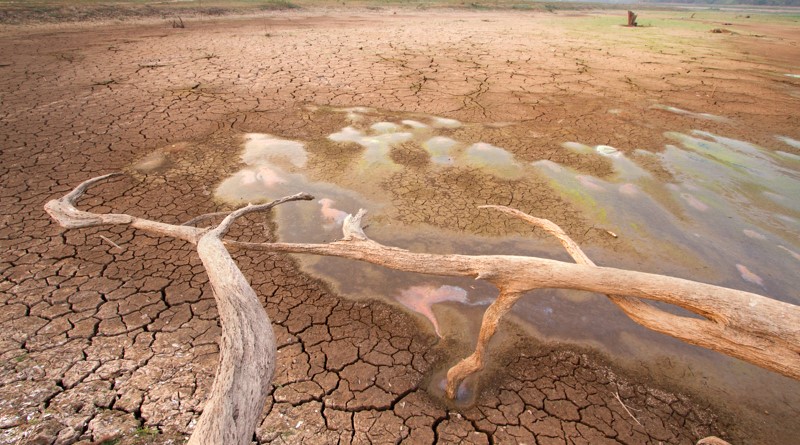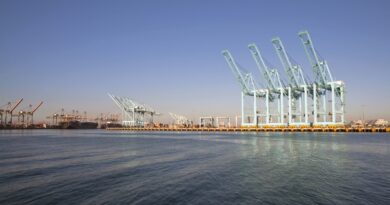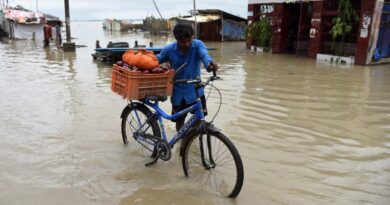Water risks could knock off $5.6 trillion from GDP of seven countries: Study

The global economy runs the risk of losing billions of dollars due to water-related disasters such as droughts, floods and storms with a possible loss to the tune of $5.6 trillion to gross domestic product (GDP) across seven countries alone between 2022 and 2050, a new research study has warned.
Launched by global professional services company GHD, the study ‘Aquanomics: The economics of water risk and future resilience’ has projected the future economic impact of water risk in a diverse range of climates and across Australia, Canada, China, the Philippines, the UAE, the UK, and the US.
While the economic shock of water risk will accelerate throughout the century, it is a pressing concern this decade; between now and 2030, water risk could cost these key economies an estimated total of just over $1.3 trillion, the study said.
The research study represents the first time the impact of water risk on GDP has been calculated across the economy as a whole and at a sector level. The research combines insurance data with econometric modelling to demonstrate the wider economic impact of increased future water risk.
The study also highlights how increasingly frequent and severe water-related events not only pose a grave threat to global economies, but to the communities and natural ecosystems that rely on a balanced water cycle for survival.
Aquanomics reveals that water risk will not be spread evenly across countries. In terms of total water-related GDP losses between 2022 and 2050, it is estimated that the US will be hit hardest, with projected losses of $3.7 trillion. Counterintuitively, the UAE – one of the world’s driest countries – is expected to be the least affected, with projected losses of $27 billion.
The study also presents the potential future impact on five critical economic sectors: agriculture; banking and insurance; energy and utilities; fast-moving consumer goods (FMCG) and retail; and manufacturing and distributions.
The Aquanomics model predicts the manufacturing and distribution sector will be the most heavily affected by increasing water risk – facing total output losses of $4.211 trillion by 2050 due to impacts such as restricted production processes, damaged assets, and disrupted distribution. The FMCG & retail sector will likely have loss of $1.104 trillion during the 2022-2050 period, followed by banking & insurance ($514 billion) and agriculture ($332 billion).
Despite the nexus between water and energy systems, the energy and utilities sector is estimated to be the least affected, with total projected output losses of $237 billion.
“Water is our most precious resource, sustaining communities and connecting industries. However, our global water systems are already feeling the pressures of today and will be further challenged by demographic and lifestyle shifts over the coming decades. And, as climate change brings more water-related disasters, the need for action is growing stronger still. Increased investment, greater innovation, and radical collaboration will be crucial in addressing this dual threat”, said GHD’s Global Water Leader Rod Naylor.
“One way to build resilience is through new infrastructure – but that is not always the answer. We need to focus on optimizing existing assets to work better, for example through digitalization, and developing integrated solutions. With climate change moving the goalposts so rapidly, it is no longer about spending trillions of dollars on large-scale infrastructure interventions that are fixed for 100 years; the industry must take a more agile approach, implementing solutions that work over time to minimize risk”, Naylor said.
Aquanomics utilized a three-phased methodology to estimate the direct losses, sector losses and GDP losses that will be attributed to water risk (droughts, floods and storms) between 2022 and 2050.
“Water resilience is becoming a major challenge everywhere, as droughts, floods, storms, heatwaves and wildfires become more frequent and severe. More data and insights on the impacts of water risks are essential for the business world, the water community, governments and society at large to make good decisions on building water resilience”, said Ania Grobicki, contributor to Aquanomics and former Deputy Director for External Affairs at Green Climate Fund and former Executive Secretary of the Global Water Partnership (GWP).
“This Aquanomics report directly links water risk with its economic, social and environmental impacts worldwide. This new data highlights the need for urgent action and innovation: governments and industry must work together to invest in the resilient water infrastructure that will help the world adapt. Such investment brings benefits for economies, as well as for communities and ecosystems that depend on water security to survive and to thrive.”



